7 Simple Bodyweight Moves to Build Strength Without Equipment
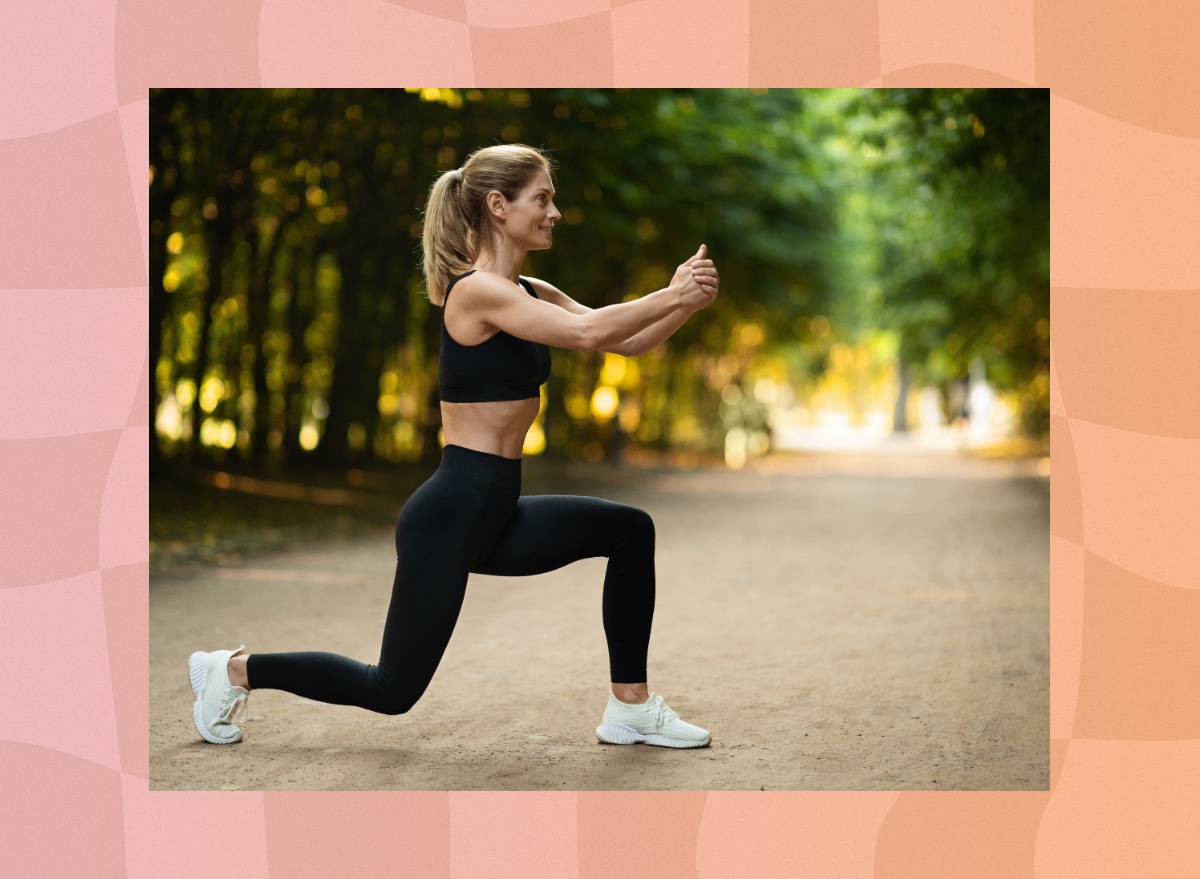
Strength training doesn't have to mean lifting heavy weights at the gym. Your own body is one of the most effective tools for building muscle, increasing endurance, and improving overall fitness. Whether you're at home, traveling, or just looking for an efficient way to get stronger, bodyweight exercises offer a versatile and powerful way to train. By using nothing but gravity and your own resistance, you can sculpt a stronger, leaner body without a single piece of equipment.
The beauty of bodyweight training lies in its accessibility. No matter your fitness level, you can modify these exercises to suit your needs, whether that means slowing down the movement for greater control or increasing reps for more endurance. Plus, bodyweight workouts engage multiple muscle groups at once, making them more functional than machine-based exercises. This means better coordination, improved balance, and strength that translates to real-world activities like lifting, running, and climbing stairs.
By mastering these seven essential moves, you'll build a strong foundation of full-body strength while enhancing your flexibility, core stability, and overall athletic performance. Whether you're a beginner or an advanced trainee, this workout will push your muscles to adapt and grow. Best of all, you can do it anywhere and there's no gym required.
The Workout
Perform 3–4 rounds of the following exercises, adjusting reps and rest periods based on your fitness level. Beginners should start with lower reps and longer rest, while advanced individuals can increase intensity by adding more reps, reducing rest time, or slowing down the movements to increase time under tension.
- Squats – 12 to 15 reps
- Push-ups – 10 to 15 reps
- Glute Bridges – 15 to 20 reps
- Superman Holds – 30 to 45 seconds
- Triceps Dips – 12 to 15 reps
- Plank Shoulder Taps – 20 reps (10 per side)
- Lunges – 12 reps per leg
Exercise Instructions
Squats
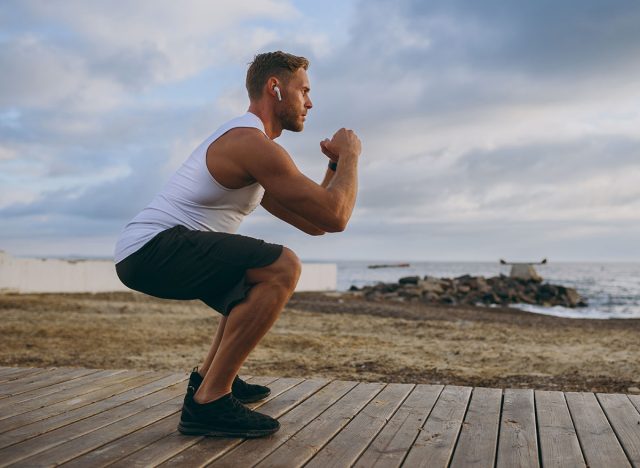
Squats are one of the best exercises for lower-body strength, working your quads, hamstrings, and glutes while also engaging your core. They help improve mobility and functional movement, making everyday activities like walking, bending, and standing up easier. Squats also strengthen the stabilizer muscles in your legs, reducing the risk of injury and enhancing athletic performance.
- Stand with your feet shoulder-width apart, toes slightly turned out.
- Keep your chest lifted and engage your core as you lower your hips back and down.
- Bend your knees until your thighs are parallel to the floor, keeping your weight in your heels.
- Press through your heels to return to standing, squeezing your glutes at the top.
- Repeat, keeping your movement controlled and steady.
Push-ups
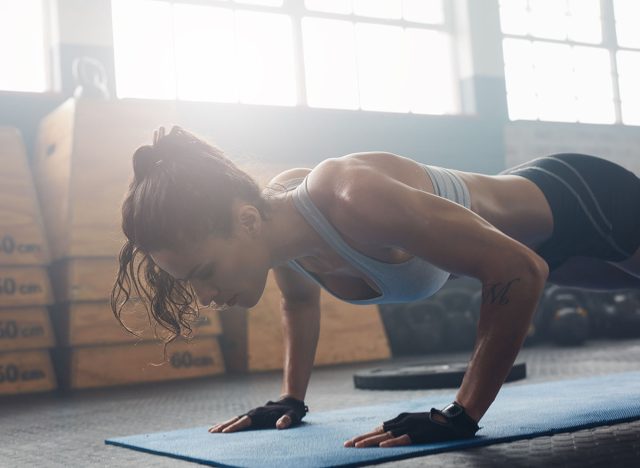
Push-ups build upper-body strength by targeting the chest, shoulders, and triceps while also activating the core. They are one of the most effective bodyweight exercises for developing pressing strength and endurance. Plus, by maintaining proper plank alignment, you improve core stability and reinforce good posture.
- Start in a high plank position with your hands shoulder-width apart.
- Keep your body in a straight line from head to heels and engage your core.
- Lower your chest toward the ground, keeping your elbows at a 45-degree angle.
- Press through your palms to push back up to the starting position.
- Maintain a controlled pace, focusing on quality reps rather than speed.
Glute Bridges
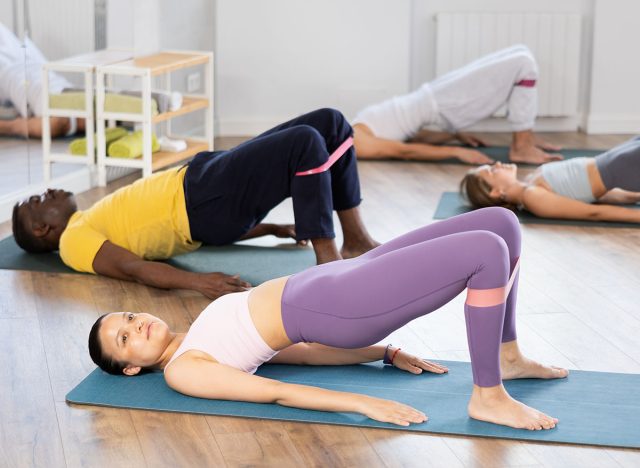
This movement strengthens the posterior chain, particularly the glutes and hamstrings, which are often underdeveloped from prolonged sitting. By activating these muscles, glute bridges improve posture, reduce lower back pain, and enhance athletic performance. They also engage the core and lower back, making them a great full-body move.
- Lie on your back with knees bent and feet hip-width apart, flat on the floor.
- Engage your core and press through your heels to lift your hips toward the ceiling.
- Squeeze your glutes at the top and hold for a second before lowering down.
- Lower slowly to maintain muscle activation throughout the movement.
- To increase difficulty, perform single-leg bridges by extending one leg.
Superman Hold

This move strengthens the entire posterior chain, including the lower back, glutes, and shoulders, which are crucial for spinal support and posture. It counteracts the effects of sitting and slouching by engaging muscles that are often neglected in daily life. Strengthening these muscles helps prevent lower back pain and improves functional strength.
- Lie face down with arms extended in front of you and legs straight.
- Engage your glutes and lower back as you lift your arms, chest, and legs off the ground.
- Hold this position for 30 to 45 seconds, keeping tension in your muscles.
- Slowly lower back down and repeat for the next round.
Triceps Dips
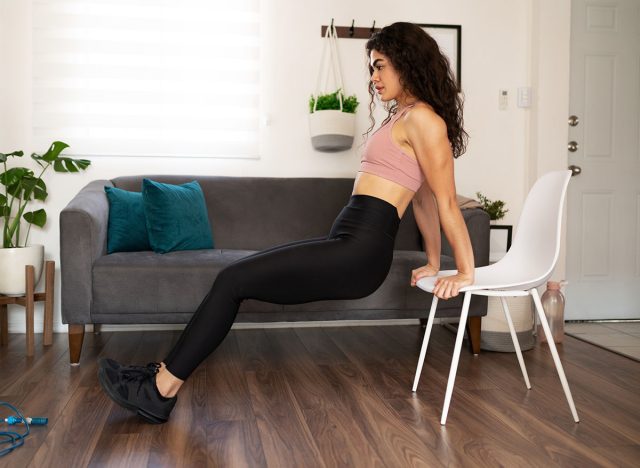
This bodyweight move isolates the triceps while also working the shoulders and chest. Strong triceps are essential for pushing movements, and dips help improve arm strength and definition. Since they require stability, they also challenge your core and coordination.
- Sit on the edge of a sturdy surface (bench, chair, or floor) with your hands gripping the edge.
- Slide your hips forward, keeping your knees bent at 90 degrees.
- Lower your body by bending your elbows until your arms form a 90-degree angle.
- Press through your palms to lift yourself back up.
- Control the movement to maximize muscle engagement.
Plank Shoulder Taps
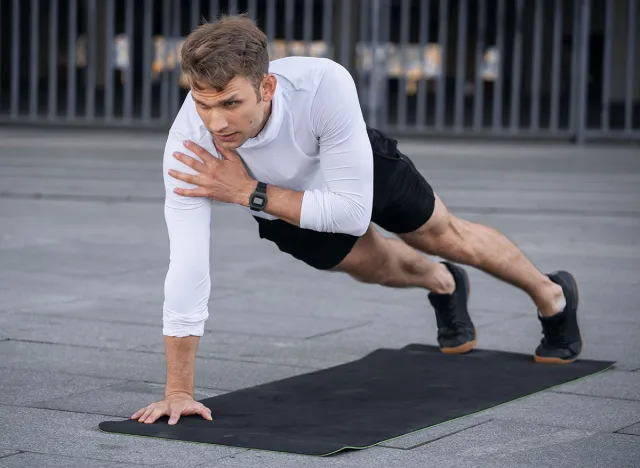
Plank shoulder taps improve core strength, balance, and shoulder stability while also training your coordination. This movement forces your body to resist rotation, strengthening the deep stabilizer muscles in your core. A strong core translates to better posture, improved balance, and reduced risk of injury.
- Start in a high plank position with your hands directly under your shoulders.
- Keeping your core tight, lift one hand and tap the opposite shoulder.
- Lower your hand back down and switch sides, alternating taps.
- Keep your hips stable and avoid rocking side to side.
- Perform for reps, ensuring slow and controlled movement.
Lunges
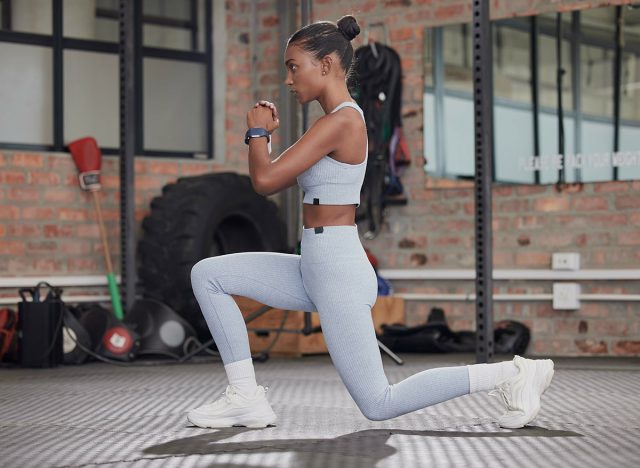
Lunges are excellent for lower-body strength, balance, and coordination. They work the quads, hamstrings, glutes, and even the core as you stabilize your body. Since lunges require unilateral movement, they help correct muscle imbalances and improve athletic performance.
- Stand with feet hip-width apart.
- Step forward with one foot and lower your back knee toward the ground until both knees form 90-degree angles.
- Push through your front heel to return to the starting position.
- Alternate legs and repeat for reps.
- Keep your torso upright and core engaged to maintain balance.
And if you enjoyed this article, don't miss How Long Your Walking Workout Should Be To Shrink Belly Fat.









